Lipids Definition: Lipids can be defined as Insolubility in water but soluble in nonpolar solvents commonly termed as fats. Lipid is soluble in the solvent like ether, chloroform, benzene, etc. Lipids have some relations to fatty acids e.g. esters. Lipids are utilized by the living organism. Functions of Lipids Described Below:
You May Also Like: Classification of Carbohydrates | Definition | Structures
Functions of Lipids
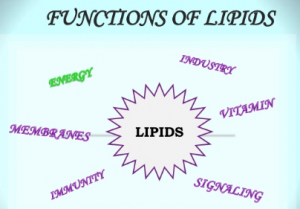
Types of Lipids:
Lipids are organic chemicals occurring in plant and animal tissues and belong to a very heterogeneous group of compounds. Lipids have three basic types:
- Simple lipids
- Compound lipids
- Derived lipids
Lipids Structure
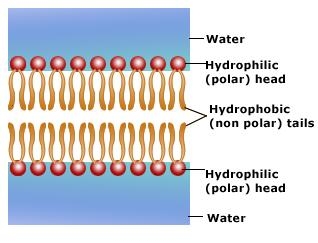
Flowchart of classification of Lipids:
The classification of lipids is discussed below with the help of the flowchart.

Classification of lipids
There are three types of Lipids:
- Simple Lipids.
- Compound Lipids.
- Derived Lipids.

- Simple lipids or Homolipids
Simple lipids are those compounds that didn’t have other substances, these are basically ester fatty acids of different alcohols. Simple lipids are the heterogeneous class of nonpolar compounds.
Simple lipids include the following ester fatty acids compounds:
-
Fats:
Fats are the Esters of fatty acids with glycerol that is commonly known as Triacylglycerol or Triglyceride.

-
Waxes:
Waxes are esters of fatty acids with alcohols other than glycerol.

2. Compound Lipids:
These contain radicals in addition to fatty acids and alcohols.
2.1 Phospholipids:
These contain phosphoric acid and frequently a nitrogenous base as well.

Phospholipids can be further subdivided into two types.
- Glycerophospholipids
- Sphingophospholipids
Glycerophospholipids:
Alcohol present in these lipids is glycerol. The diester of glycerophosphoric acid is the most abundant one in which phosphoric acid is also ester-linked to nitrogenous and non-nitrogenous alcohol.
Examples:
- Phosphatidic acid
- Lecithin
- Cephalins
- Plasmalogens
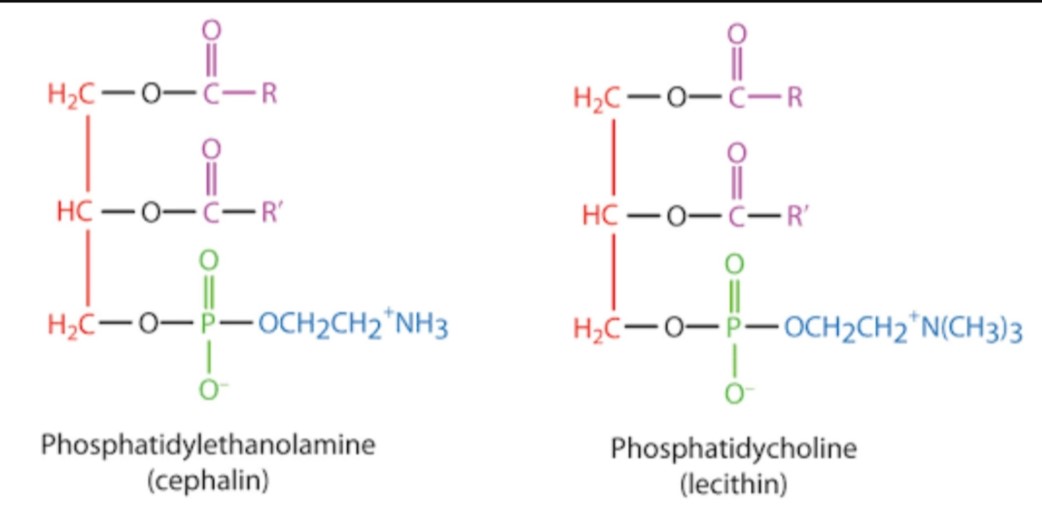

Sphingophospholipids:
These include sphingomyelins which contain the alcohol called sphingosine, a fatty acid, phosphoric acid, and a nitrogenous base. Sphingomyelins are the only lipids that contain both sphingosine and H3PO4.
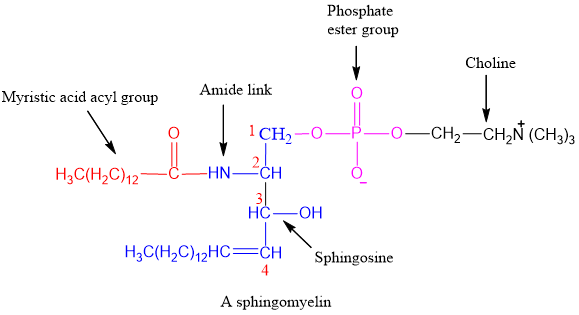
You May Also Like: Phases of the Cell Cycle | Interphase | Mitotic Phase
2.2 Glycolipids and cerebrosides:
These contain sphingosine, a fatty acid, and a hexose.
Gangliolipids:
These are Compounds related to cerebrosides. They contain sphingosine, long-chain fatty acids, galactose, glucose, hexosamine, and neuraminic acid. All the above lipids have a molecule of sphingosine in their structure but no H3PO4.T hey can be termed as non-phosphate containing sphingolipids.
2.3 Sulfolipids:
These contain sphingosine, fatty acid, and a sulfate hexose.
3. Derived or associated lipids
They are Hydrolytic products of all the above compounds. These include diglycerides, monoglycerides, fatty acids alcohols including sterols and vitamins D, E, K, and carotenoids.
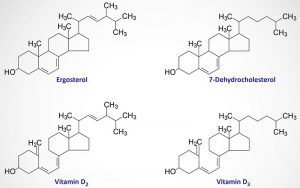
Examples:
Prostaglandin, Terpenes also belong to this class of lipids.
Functions of Lipids:
- Lipids are a Good source of energy for animals.
- Lipids are the carrier of fat-soluble vitamins and essential fatty acids
- They make food more palatable and decrease its mass.
- They help to decrease gastric motility and secretions.
- Lipids contour to the body.
- Lipids are the main source of anatomical stability.
- These are the block for energy reservoirs in adipose tissues.
- Lipids perform an Insulating effect on the nervous system.
- They are mainly part of protoplasm and membranes as well.
- Lipids are the precursor of important physiological compounds in biology.
- They are resistant in the absorption of water-soluble substances
- Lipids prevent water evaporation from the skin of animals.
- Sphingosine help in the transmission of nerve impulses.
- Lipids mainly help in synapsis and form postsynaptic membrane receptor abundantly.
- Prostaglandin lipids have the hormones which perform actions for the body.
Examples of Lipids in Biology
Example of common lipids are:
Vegetable oil, Butter, CholesterolSteroids, Waxes, Phospholipids, and fat-soluble vitamins.


